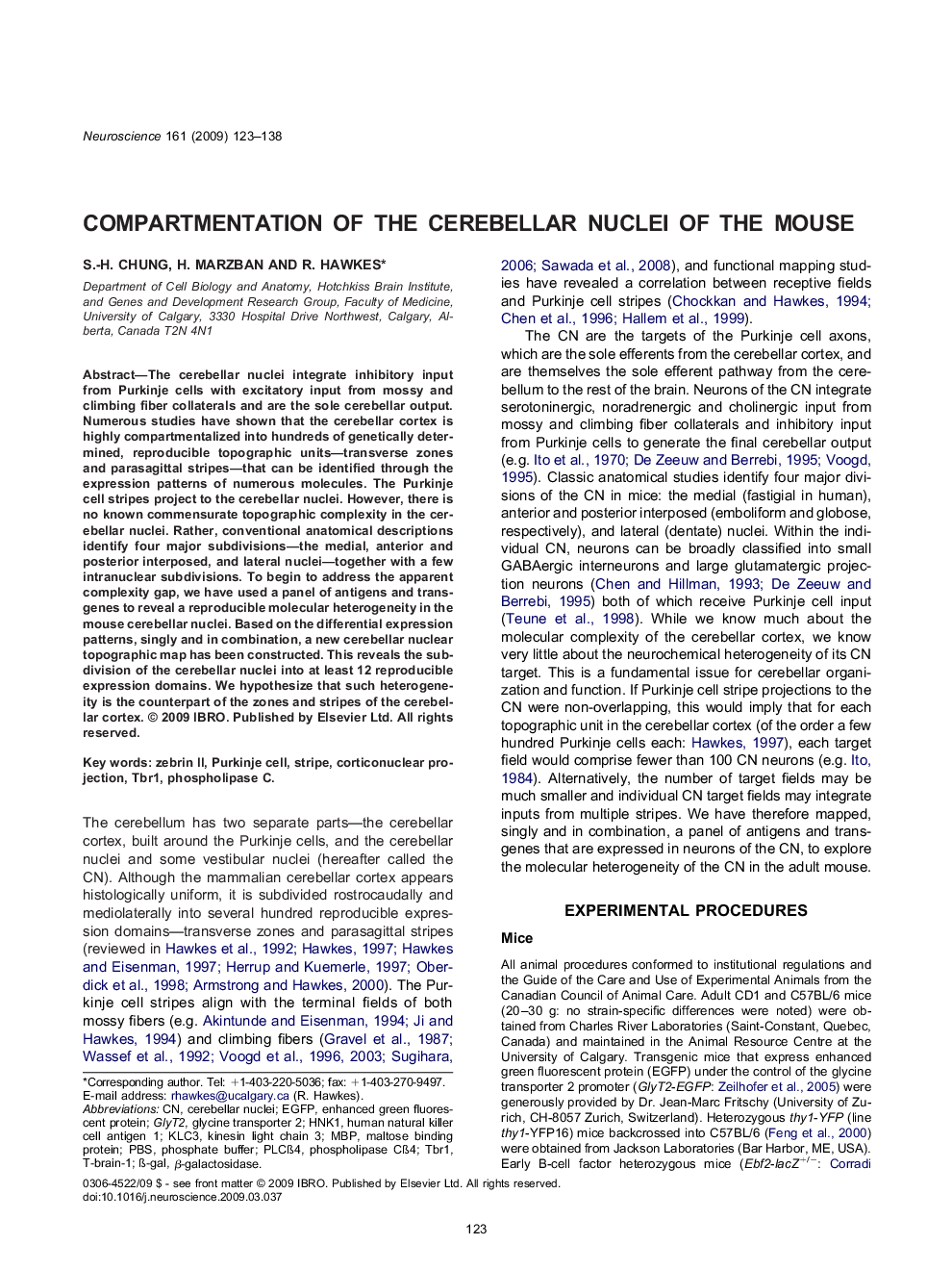| Article ID | Journal | Published Year | Pages | File Type |
|---|---|---|---|---|
| 4339907 | Neuroscience | 2009 | 16 Pages |
Abstract
The cerebellar nuclei integrate inhibitory input from Purkinje cells with excitatory input from mossy and climbing fiber collaterals and are the sole cerebellar output. Numerous studies have shown that the cerebellar cortex is highly compartmentalized into hundreds of genetically determined, reproducible topographic units-transverse zones and parasagittal stripes-that can be identified through the expression patterns of numerous molecules. The Purkinje cell stripes project to the cerebellar nuclei. However, there is no known commensurate topographic complexity in the cerebellar nuclei. Rather, conventional anatomical descriptions identify four major subdivisions-the medial, anterior and posterior interposed, and lateral nuclei-together with a few intranuclear subdivisions. To begin to address the apparent complexity gap, we have used a panel of antigens and transgenes to reveal a reproducible molecular heterogeneity in the mouse cerebellar nuclei. Based on the differential expression patterns, singly and in combination, a new cerebellar nuclear topographic map has been constructed. This reveals the subdivision of the cerebellar nuclei into at least 12 reproducible expression domains. We hypothesize that such heterogeneity is the counterpart of the zones and stripes of the cerebellar cortex.
Keywords
Related Topics
Life Sciences
Neuroscience
Neuroscience (General)
Authors
S.-H. Chung, H. Marzban, R. Hawkes,
